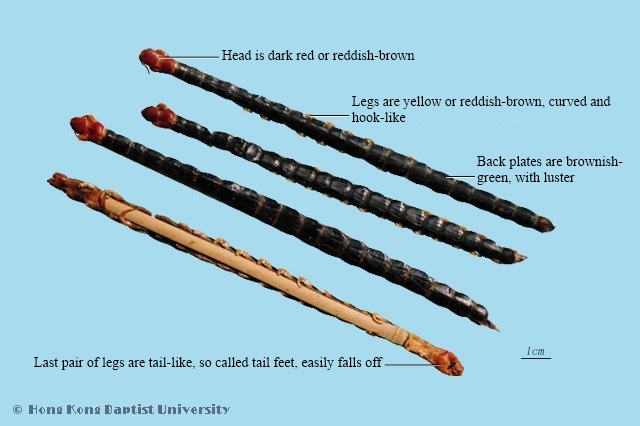Production RegionsPrimarily produced in the Chinese provinces of Hubei, Jiangsu, Anhui, Zhejiang.
Macroscopic FeaturesFlat and long strip-like, 9~17cm long, 0.5~1cm wide. Whole body has 22 ring joints; last joint is slightly small and thin. Head has 2 dark red ring joints, with one pair of antenna and poison hooks; back is brownish-green or dark green, lustrous, with 2 longitudinal ridges; ventral side is pale yellow or brownish-yellow, wrinkled; each joint has one pair of legs from the second joint growing on the sides, yellow or reddish-brown, curved like hook. Brittle texture, fractured surface has cracks. Slightly fishy odor, distinctive odor and irritating to the nose, acrid and slightly salty taste.
Quality RequirementsSuperior medicinal material is dry, with intact body, red head and green body.
PropertiesAcrid, warm, toxic
FunctionsExtinguishes wind, calms convulsion, attacks toxin, disperses binds, frees channel, stops pain. Apply to infantile convulsion, convulsion, stroke with facial paralysis, paralysis, tetanus, wind-damp impediment, sore, scrofula, and poison snake bites.
OriginThe dried body of Scolopendra subspinipes mutilans L. Koch. (Scolopendridae). Captured in spring and autumn, bamboo strips are inserted into the head and tail and the body is straightened, then dried.
